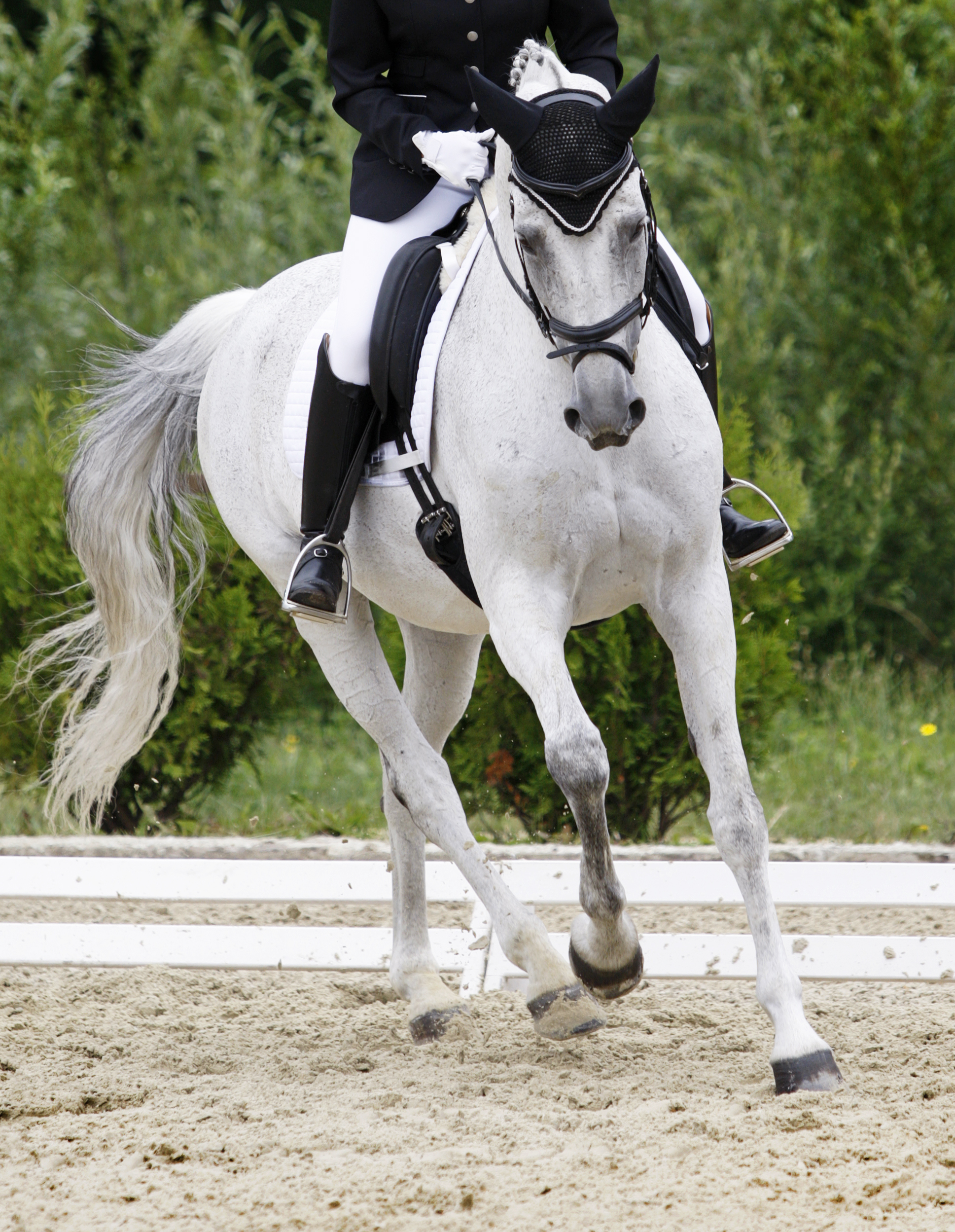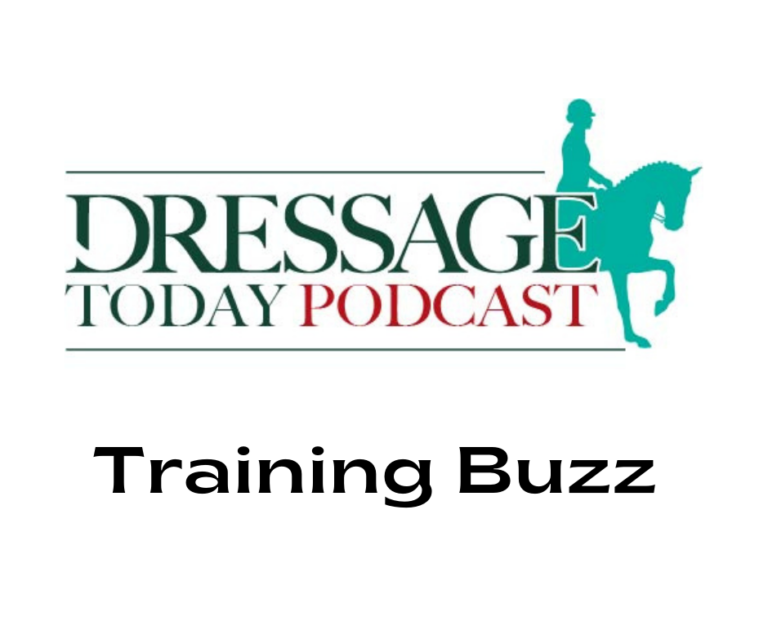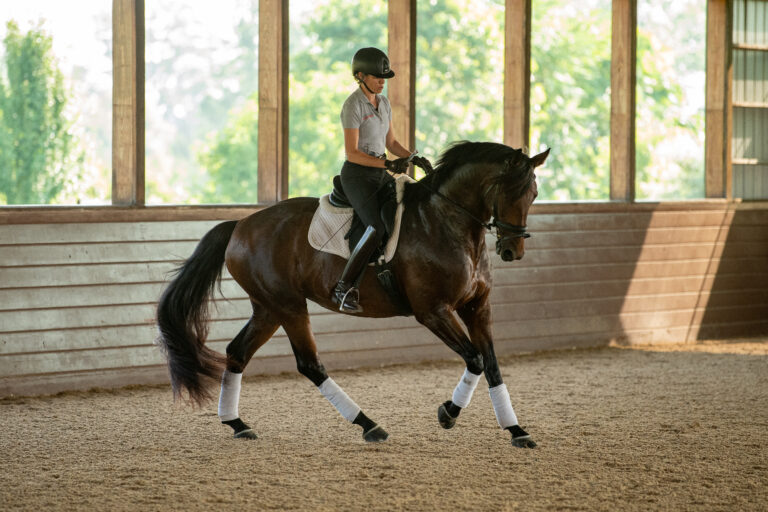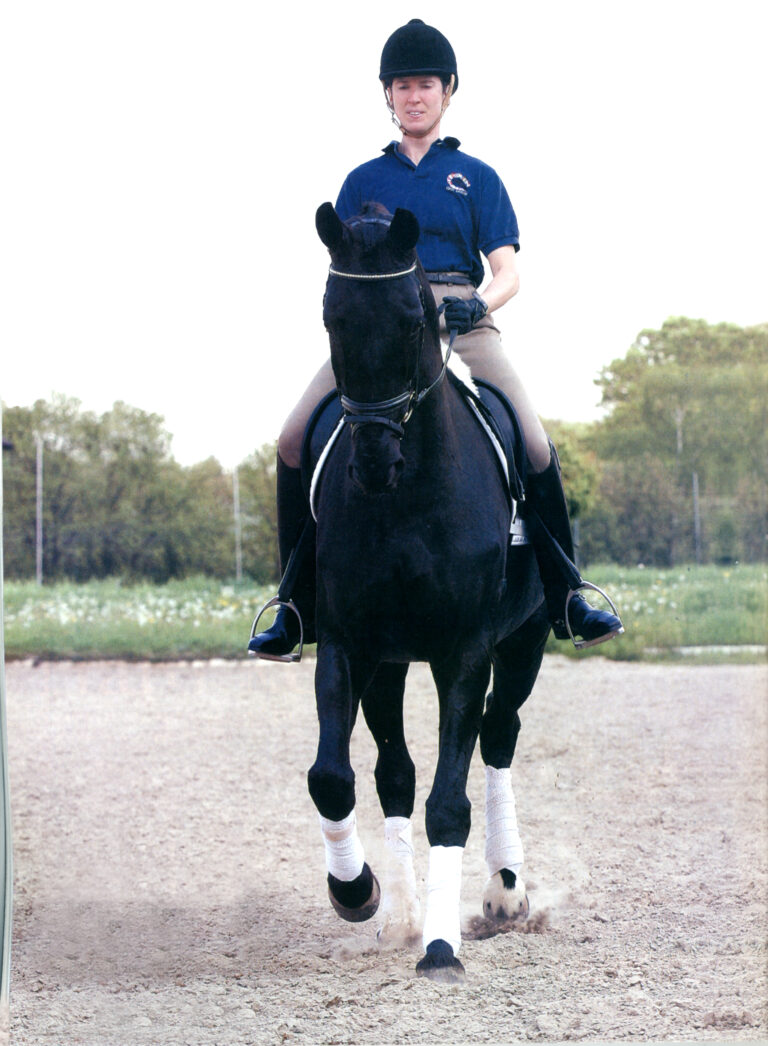The term “in front of the leg” is often used in dressage, though rarely defined. To me, “in front of the leg” means two things:
1) the horse responds quickly to the use of the leg, and
2) the horse responds with the appropriate amount of energy. “Energy” used in this context may also be called impulsion or activity.

A good way to tell that your horse has enough impulsion/activity is to determine the amount of time it takes your leg aid to be answered. If you have the sensation that you could prepare and execute an upward or downward transition within three strides, your horse is probably where you want him to be. From the moment you apply your legs to go from walk to trot, expect the reaction to occur in the amount of time it takes you to hiccup. This feeling of the horse being ready to react quickly is sometimes referred to as being “in front of the leg” or “on the aids.” While riding within any gait, you should feel as if your horse has the desire to carry himself across the ground without being constantly pushed or prodded by you.
Additionally, when the horse is on the move, we need to consider the tempo (the speed in which the correct rhythm of footfalls within a gait repeats itself) as well as how much ground he’s covering. It’s not necessary for him to be superquick in the tempo to be on your aids or in front of your leg, but you should be able to adjust tempo (quicker or slower) and not lose the feeling that he desires to carry himself forward.
Assuming that your horse could use some improvement in this area, there are a number of techniques that can help. When applied correctly, the whip and spur can help train the horse to the rider’s aids. The horse should be trained to respond to the leg from the first application, followed quickly by the whip and leg in unison if the horse does not respond as desired. For a horse with a laid-back attitude this might take a little doing. You want to sting him enough so that he responds immediately and then praise him for his effort. We want to use strong aids as little as possible but as much as necessary to get the job done. In my experience horses who do not understand the proper response to the leg do not benefit from heavy use of the spur. Reserve the spur for a quick reminder if the horse falls off your aids.
A good exercise to train this quick response to the leg is walk–trot–walk transitions on a 20-meter circle. Ride a minimum of two transitions per circle with three to five walk strides between trot transitions. You want to feel as if the walk is marching with activity.
Stay alert to the time it takes him to respond to your leg, using the whip as discussed above. Part of what we’re looking for is a balance between the “go” and the “whoa.” That is to say that the horse must respond to both the driving aids creating energy that goes forward (think: across the ground) as well as to at least a rudimentary version of the half halt (a momentary increase of collection or an effect of the aids that increases the attention and improves the balance of the horse). If the trot feels sluggish or he anticipates the walk more than the trot, intersperse trot–canter–trot transitions until some of the canter’s natural impulsion starts to infuse his trot. You’ll know he has enough activity/impulsion when he responds instantaneously to a light leg aid.
Cultivating this responsiveness to the aids will produce a lighter, more expressive horse and lay the foundation for all future training in dressage.
Heidi Chote is a U.S. Dressage Federation (USDF) Certified Instructor through Fourth Level. She is a USDF gold medalist and is an “L” Education Program graduate. She has studied abroad and teaches horse and rider biomechanics at her First Chance Farm in Wilton, California (firstchancefarm.com).











